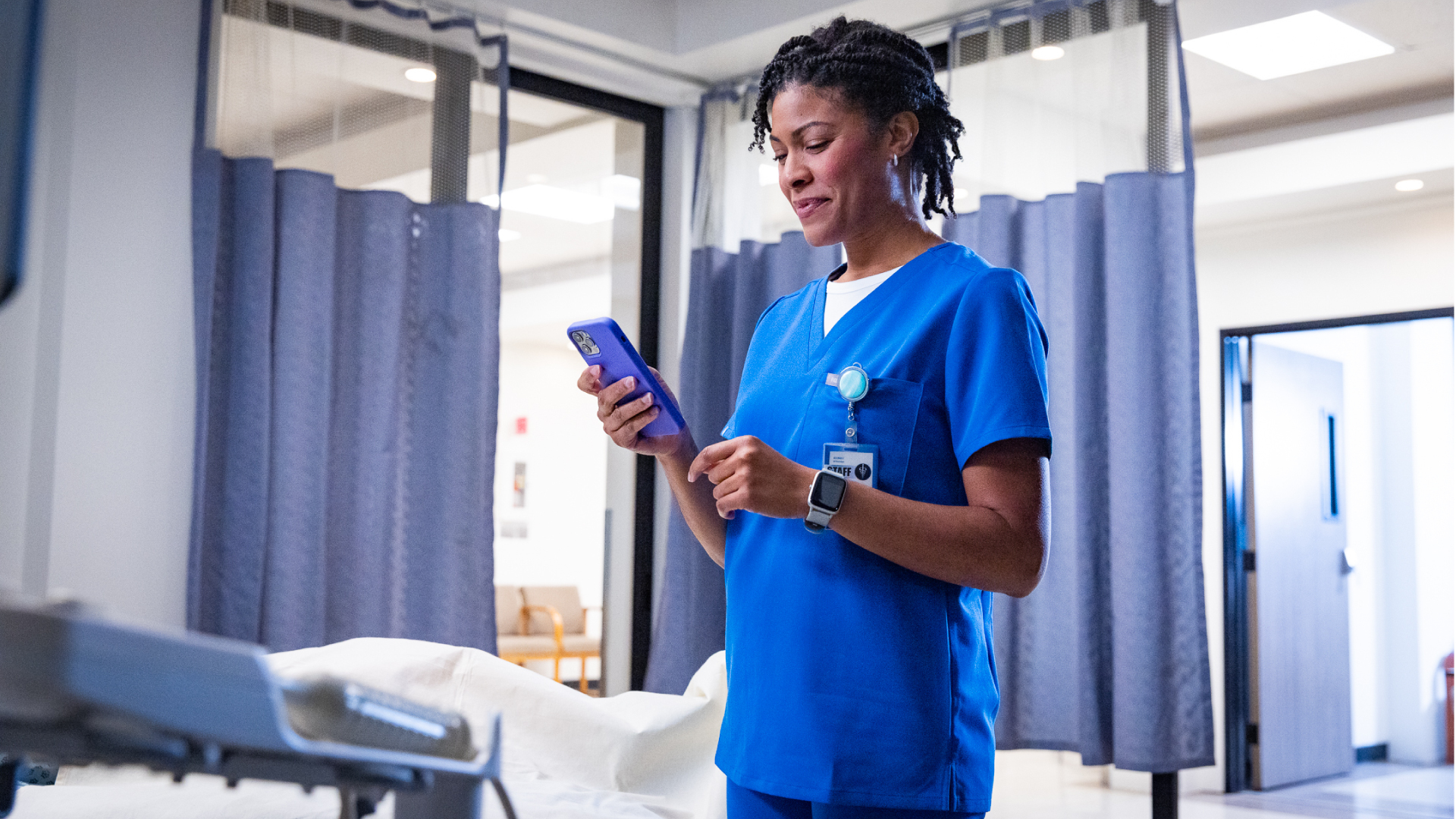Does Point-of-Care Ultrasound Improve Clinical Outcomes?
Category
Blog
Date
July 29, 2021
Source
Exo

In the world of medicine, even the most incremental progress in patient care can lead to some profound outcomes. For example, with around 330 million people in the United States, improving a medical outcome by just a tenth of a percent could theoretically positively impact 3.3 million people. So, when you consider all the uses and benefits of point-of-care ultrasound, also known as POCUS, it makes sense that there would generate excitement.
Doctors and other first responders already treat patients and save lives. Imagine what they could do with even better and more convenient tools. That’s where POCUS comes in. In this blog, we’ll discuss the importance of POCUS, more specifically: POCUS uses, POCUS diagnoses, and POCUS outcomes.
What is a Point of Care Ultrasound (POCUS)?
In the simplest terms, the POCUS meaning in medical terms refers to trained experts using ultrasound technology to treat patients wherever they have come to receive care. Traditional ultrasound devices tend to be bigger, bulkier, harder (or nearly impossible) to move. That means that to get an ultrasound, the patient would need to go to the location of the machine. With portable POCUS devices, patients can receive treatment in a timelier fashion, wherever they are.
What is POCUS Used For?
POCUS devices are used as diagnostic imaging tools, just like other ultrasounds. One of the main differences with POCUS exams is that they look at specific body parts, organs, or areas. With the images that POCUS exams provide, medical professionals can better diagnose issues and develop treatment plans. POCUS is also used to assist in procedural guidance.
Where Is POCUS Used?
One of the best point-of-care ultrasound benefits is that they can be used just about anywhere. This could be a bedside, an ambulance, an emergency room, a rural setting, or any other location where a patient needs to be treated.
In a traditional hospital setting for example, POCUS can be used to supplement existing technology, providing more versatile treatment and diagnosis options. In rural villages, POCUS devices provide cheaper and more convenient ultrasound options than a traditional piece of equipment. Similarly, for patients who are in critical condition, moving them to a different room or location might not be a feasible option. In these cases, POCUS devices come in quite handy to ensure any patient can get the care they need.
What Can POCUS Diagnose, and Can It Improve Outcomes?
POCUS devices can either fully diagnose or assist in diagnosing a lot of medical issues and ailments. According to the American Academy of Family Physicians, some of the most compelling examples include:
- Abdominal Aortic Aneurysms (AAA): With 100% sensitivity to AAA, POCUS devices can help reduce the rate of rupture mortality by 34%.
- Deep Vein Thrombosis (DVT): With 96% sensitivity and 97% specificity for detecting DVT, POCUS devices can reduce the number of patients who need hospitalization for this condition. In untreated cases of DVT, mortality rates are as high as 30%.
- Respiratory Distress: POCUS findings combined with clinical evaluation help differentiate cardiac and pulmonary causes of respiratory distress. POCUS also helps diagnose related symptoms like pneumonia or bronchial obstruction. POCUS is effective and accurate—in fact, it’s “more sensitive than plain radiography in diagnosing other conditions such as pleural effusion (94% sensitivity) and pulmonary contusion (92% sensitivity).” Additionally, compared with standard radiology practices, when applied to lung exams, POCUS “decreases emergency department diagnostic time by two hours.”
These diagnoses are just the tip of the iceberg when it comes to POCUS. Other diagnostic evidence exists for the following:
- Appendicitis
- Undifferentiated Shock
- Cardiac Arrest
- Trauma
- Dyspnea
- Biliary Colic and Cholecystitis
- Bowel Obstruction and Perforation
- Decreased Cardiac Ejection Fraction and Presence of Pericardial Effusion
- Elevated Intracranial Pressure
- Intraperitoneal Bleeding in Trauma
- Obstetric and Gynecologic Conditions (such as Ectopic Pregnancy)
- Hydronephrosis (caused by Renal Colic)
- Retinal Detachment
- Skin and Soft Tissue Infections
When it comes to determining whether or not POCUS can improve clinical outcomes, the answer is an overwhelming yes…and in multiple ways. POCUS improves outcomes by:
- Producing accurate results
- Providing versatile, transportable, and convenient technology
- Being more affordable than traditional ultrasound technology, and thus, being more accessible
Exo Works™: Improve Your Workflow, Improve Outcomes
Ultimately, POCUS technology is really about assisting medical professionals in their jobs. We developed Exo Works to accommodate better, more efficient workflows, from the initial ultrasound exam through the next steps to review and document whatever the medical imaging reveals. It doesn’t matter if POCUS is being used in an order-based or encounter-based workflow, our solution makes it easy.
With the ability to connect right to a smart device like a phone or tablet, Exo Works helps consolidate and simplify documentation, reporting, billing, and reimbursement for POCUS exams.
To learn more, contact us or schedule a demo of our workflow in action.